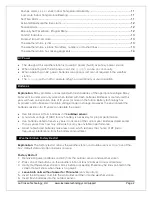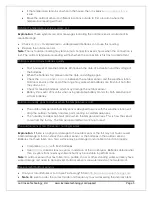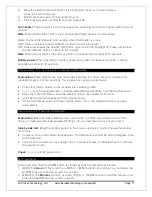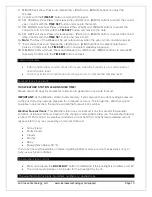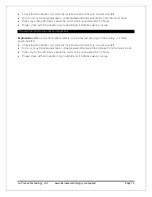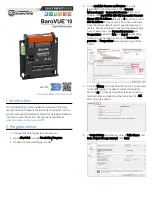
La Crosse Technology, Ltd. www.lacrossetechnology.com/support
Page 8
First:
Place the outdoor sensor in the desired shaded location and the weather station in the
home. Wait approximately 1 hour before permanently mounting the outdoor sensor to ensure that
there is proper reception.
POSITION
Outdoor:
•
Protect the outdoor sensor from standing rain or snow and from the overhead sun, which
can cause it to read incorrectly.
•
Mounting under an eave or deck rail works well.
•
If you choose, you can construct a small roof or box for the outdoor sensor. Be sure the
box has vents.
•
Mount the outdoor sensor on the North side to prevent the sun from causing incorrect
readings.
•
Mount at least 6 feet in the air for a strong RF (radio frequency) signal.
•
Do not mount the outdoor sensor on a metal fence. This significantly reduces the effective
•
Outdoor sensors are water resistant, not waterproof.
•
Mount outdoor temperature sensor
vertically
.
•
Avoid more than one wall between the outdoor sensor and the weather station.
•
The HIimum transmitting range in open air is over 300 feet (91 meters).
•
Obstacles such as walls, windows, stucco, concrete, and large metal objects can reduce
the range.
•
Do not mount near electrical wires, transmitting antennas, or other items that will
with the signal.
•
RF (radio frequency) signals do not travel well through moisture or dirt.
MOUNT
Option 1:
Install one mounting screw (not included) into a wall.
Place the outdoor sensor onto the screw (hanging hole on the backside).
Gently pull down to lock the screw in place.
Option 2:
•
Insert the mounting screw through the front of the outdoor sensor and into the wall.
•
Tighten the screw to snug (do not over-tighten).
Position Weather station
•
The weather station has a pull-out stand to sit on a desk or table or can be wall mounted.
•
Place within
of the outdoor sensor.
•
The maximum transmitting range in the open air is 300 feet (91 meters).
•
Obstacles such as walls, windows, stucco, concrete, and large metal objects can reduce the
range.
•
Choose a location 6 feet or more from electronics such as cordless phones, wireless gaming
systems, televisions, microwaves, routers, baby monitors, etc., which can prevent signal
reception.
•
Be aware of electrical wires and plumbing within a wall. This will interfere with RF (radio
frequency) signal reception.


